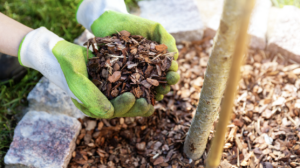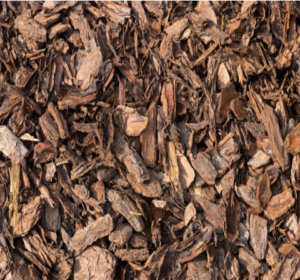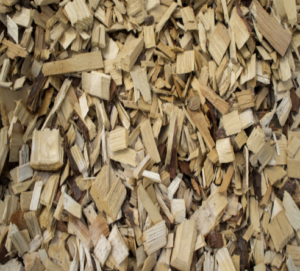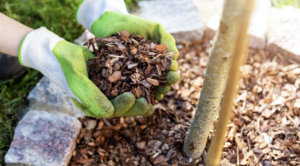Woodchips 101: Understanding the Uses and Benefits in Landscaping

Welcome to our comprehensive guide to woodchips in landscaping! In this article, we’ll delve into the world of woodchips, exploring their various uses and the multitude of benefits they offer for your landscaping projects.
What are Woodchips?
Woodchips are small pieces of wood resulting from chipping or shredding tree branches, trunks, or other wood materials. They come in various sizes, shapes, and textures, making them versatile for landscaping applications. Common types of wood used for making woodchips include pine, cedar, and hardwoods like oak and maple.
Uses of Woodchips in Landscaping:
- Mulching Flower Beds and Garden Borders:
One of the most popular uses of woodchips in landscaping is mulching flower beds and garden borders. Woodchips act as a protective layer, helping to suppress weeds and retain moisture in the soil. They can also add a creative touch to your garden beds, enhancing the overall aesthetic appeal.
- Creating Pathways and Walkways:
Woodchips are also excellent for creating pathways and walkways in your garden or backyard. Whether you prefer a rustic woodland path or a more polished look, woodchips can be arranged to suit your style. They provide excellent traction and reduce soil erosion, making them a practical and visually appealing pathway choice.
- Enhancing Soil Health in Vegetable Gardens:
Woodchips can improve soil health and productivity in vegetable gardens. When applied as mulch around vegetable plants, they help regulate soil temperature, retain moisture, and suppress weeds. As they decompose over time, woodchips contribute organic matter to the soil, enriching it with essential nutrients for plant growth.
- Covering Bare Soil to Prevent Erosion:
Bare soil is susceptible to erosion from wind and water, which can lead to nutrient loss and soil degradation. Woodchips provide an effective solution for covering bare soil, preventing erosion, and promoting soil stability. By creating a protective barrier, woodchips help maintain soil structure and fertility, ensuring the long-term health of your landscape.

Benefits of Using Woodchips:
- Weed Suppression:
One of the primary benefits of using woodchips in landscaping is their ability to suppress weeds. By creating a physical barrier between the soil and sunlight, woodchips inhibit weed germination and growth, reducing the need for chemical herbicides and manual weeding.
- Moisture Retention:
Woodchips act as a natural insulator, helping retain soil moisture. This is particularly beneficial during hot, dry weather when plants struggle to access sufficient water. Woodchips help maintain optimal plant growing conditions by conserving moisture and promoting healthy growth and vitality.
- Soil Insulation and Temperature Regulation:
Woodchips provide insulation to the soil, protecting plant roots from extreme temperatures. Woodchips help retain soil heat in colder climates, preventing plant frost damage. They shield the soil from excessive heat in warmer climates, helping plants thrive in hot summer months.
- Aesthetics and Visual Appeal:
In addition to their practical benefits, woodchips add visual interest and texture to your landscape. With a range of colors and textures available, you can customize the look of your garden to suit your style. Whether you prefer a natural, earthy vibe or a more polished aesthetic, woodchips can enhance the overall beauty of your outdoor space.
Choosing the Right Woodchips:
When selecting woodchips for your landscaping projects, there are several factors to consider:
- Wood Type: Choose a type of wood that complements your landscape and meets your aesthetic preferences. Popular options include pine, cedar, and hardwoods like oak and maple.
- Size and Texture: Consider the size and texture of the woodchips, as this will affect their appearance and functionality in your landscape. Finer woodchips may be more suitable for mulching flower beds, while coarser woodchips are ideal for pathways and walkways.
How to Apply Woodchips:
Once you’ve chosen the right woodchips for your landscape, it’s time to apply them properly:
- Mulching: Spread woodchips evenly around the base of plants, creating a layer approximately 2-4 inches deep. Be sure to leave a gap around the stems or trunks of plants to prevent rot and disease
- Pathways and Walkways: Create a base layer of compacted gravel or landscape fabric, then spread woodchips evenly on top to create a stable and durable surface.
- Vegetable Gardens: Apply woodchips as mulch around vegetable plants, leaving space around the stems to prevent rot. Replenish woodchips as needed to maintain a consistent layer.
Maintaining Woodchips:
To keep your woodchips looking and performing their best, follow these maintenance tips:
- Replenishment: Periodically replenish woodchips as they decompose or get displaced by weather or gardening activities. Aim to maintain a consistent layer to ensure optimal weed suppression and moisture retention.
- Weed Control: Control weeds by applying a pre-emergent herbicide or hand-pulling weeds as soon as they appear. Regularly inspect your woodchip beds for signs of weed growth and take action promptly to prevent them from taking over.
- Moisture Monitoring: Check the moisture levels of your woodchip beds regularly, especially during hot, dry weather. Water mulched areas to ensure plants receive adequate hydration, paying attention to areas prone to drying out quickly.
Creative Ideas for Using Woodchips:
In addition to their traditional uses, woodchips can be incorporated into various creative projects and design elements in your landscape:
- Create decorative borders and edging around flower beds and garden borders.
- Build raised garden beds or planters using stacked woodchips as a rustic alternative to traditional materials.
- Design custom signage or garden markers using woodchips as a natural, eco-friendly medium.
- Construct seating areas or benches using reclaimed woodchips for a unique and sustainable outdoor seating solution.

Woodchips are a versatile and valuable resource for landscaping projects of all sizes and styles. Whether mulching flower beds, creating pathways, or enhancing soil health in vegetable gardens, woodchips offer many benefits for your landscape. By understanding their uses, benefits, and application techniques, you can harness the power of woodchips to create a beautiful, functional, and sustainable outdoor space that you’ll enjoy for years to come.
Want to learn more about using woodchips? Contact us today. We would be happy to help you with all of your landscaping needs.






